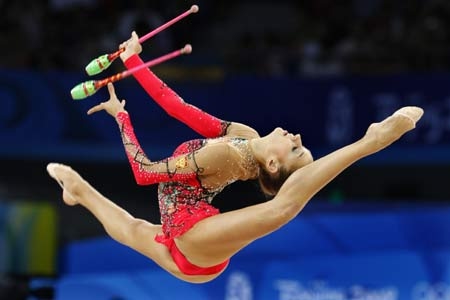Olivia Dunne is not the best gymnast in the world and neither is she the sport’s most recognizable ambassador. But if you were to watch the slow-motion clips Dunne uploads to TikTok, particularly the ones in which she performs handsprings and backflips on the sand (what she calls “beachnastics”), you’d probably see why the 20-year-old New Jersey native is, by some standards at least, the biggest thing in American gymnastics.
More than Derek Jeter, Cher, or the current all-around Olympic gymnastics champion, Sunisa Lee, Dunne has 3.7 million Instagram followers. More accounts follow Dunne than Beyoncé (7.2 million) on TikTok. Gymnastics is included in a few of the images and videos. Her poses are sultry, and her captions are sly. The posts elicit responses that cascade in like an unending stream. “Wife?” “Stunning.” “Cookie?” “Cookie???” “I’d give my liver and kidney to meet you.” Dunne responded, “I’d like to meet you with your kidney and liver still inside of you.
At the age of three, Dunne started practicing gymnastics and quickly excelled at local, state, and international contests. She missed out on her peers’ opportunities to go to sleepaway camp and have bonfires since she spent her childhood summers at demanding training camps. She improved her floor, beam, and bar routines while honing her social media skills. (Dunne has had an Instagram account for half of her time on Earth, or since she was ten years old.)
She attends Louisiana State University on a full athletic scholarship. A leg injury kept her from competing with the Tigers in 2023 until her return this past weekend. But Dunne’s erratic competition schedule has not interfered with her being the highest-paid female college athlete in the US: she is worth an estimated $2.3m and has said that she pulls in seven figures in endorsement deals a year. No wonder: according to industry analyst On3, a single social media post by Dunne is worth $31,000.
Depending on who you ask, the frenzy for Dunne has had either a catalyzing or toxic effect on the culture of gymnastics. Her fans, mostly white, teenage males – kids who don’t self-identify as gymnastics specialists by any stretch – have gatecrashed a subculture that has long purported to celebrate a milk-fed version of childhood. This new wave of fans, under the influence of social media, have come up with new things to fetishize.





